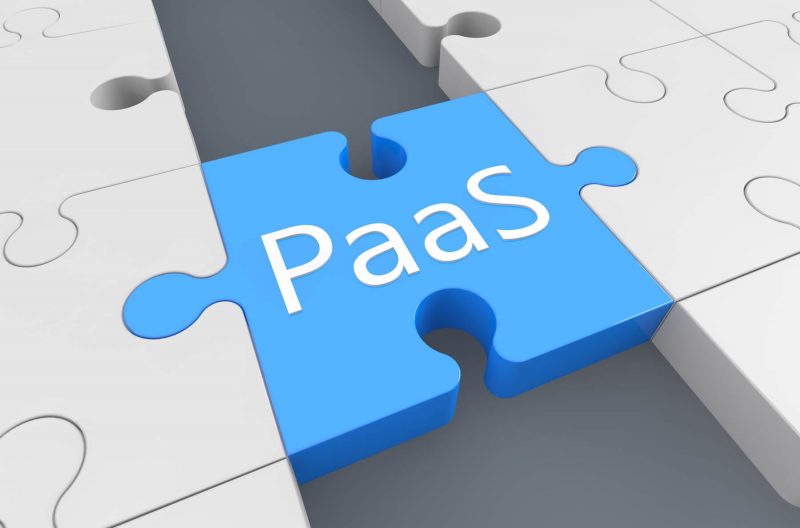Cloud computing has significantly changed the ways of building and running business applications.
Platform as a Service (PaaS) is a model that implies running applications without the need for maintaining on-premises hardware and software infrastructure. PaaS solutions can offer the latest features without the pain of constant upgrades.
What are the benefits of Platform as a Service?
Are there drawbacks?
Let’s dive into the model’s concept and try to recognize when it is especially helpful.
Contents
Three cloud family categories
The family of cloud computing services comprises SaaS, IaaS, and PaaS.
- IaaS (Infrastructure as a Service) means providing a basic computing storage and networking infrastructure. Users must create virtual machines, install operating systems, support applications and data, as well as handle all the management associated with those tasks.
- SaaS (Software as a Service) means that a provider offers an entire application stack. Users should log in and work with the app that runs completely on the provider’s infrastructure.
- In PaaS (Platform as a Service), a provider offers more of the application stack than IaaS provider does, adding operating systems, middleware, and other runtimes.
PaaS definition
Platform as a Service is a cloud-computing model that implies a third-party provider delivering hardware or software capabilities for customization over the Internet.
Providers host this software or hardware on their own infrastructure, so PaaS users do not need to install in-house software or purchase hardware to develop and run a new application.

What does PaaS include?
The key offerings of the Platform-as-a-Service vendors are:
- Development tools
- Operating systems
- Middleware
- Database management
- Infrastructure
How does PaaS work?
PaaS solutions do not usually replace the whole business IT infrastructure. Enterprises rely on a PaaS provider for key services, for example, application hosting or Java development.
The provider supplies a resilient environment where users may install apps and data sets. This gives users a chance to focus on creating and running applications rather than constructing and maintaining services.
Many PaaS solutions are geared toward software development. They propose computing and storage infrastructure, text editing, version management, as well as compiling and testing services. They all help developers to create new software more quickly and effectively
What is a common PaaS scenario?
Companies usually use PaaS solutions for one of these three purposes:
- Development framework. Developers create custom cloud applications based on the existing PaaS using built-in software components. This reduces the amount of coding that developers have to do and unlocks all the perks of cloud software, such as scalability, high-availability, and multi-tenant capabilities.
- Business analytics. Many tools provided as a service let companies analyze data, find insights, and predict outcomes. This way, PaaS BI apps can help businesses improve forecasting and make more informed decisions.
- Additional services. Besides, PaaS often encompasses common functionality that can benefit any business application, such as workflows, security features, and scheduling.
Key advantages of Platform as a Service
Choosing PaaS, you get the infrastructure as a service that provides several benefits. Developers use PaaS because of:
- Decreased coding time. Development tools and components included in PaaS by default can cut the time required to code new apps. For example, with built-in workflows, it takes only configuration efforts instead of from-scratch development to automate a company’s processes.
- Additional development capabilities. PaaS components simplify coding and decrease the need for developers with special skills.
- Responsiveness. Some PaaS providers optimize their solutions for multiple screens (PCs, mobile devices, and browsers), which makes cross-platform app development quicker and easier.
- Access to multifunctional tools. According to the pay-as-you-go model, you can use complex development software and analytics tools that are not always affordable to purchase outright.
- Supporting remote development teams. Developers can work together on their projects even when they are geographically distributed because the development environment is accessed over the Internet.
- Managing the app lifecycle efficiently. PaaS solutions provide all the required capabilities to support your apps in the course of the entire lifecycle—building, testing, deploying, maintaining, and updating.
- Price. In many cases, PaaS is more cost-effective than leveraging IaaS. PaaS customers do not need to manage virtual machines, so overhead is reduced.
Potential drawbacks of using PaaS
- Switching between PaaS providers can be difficult as the application is created using the vendor’s tools specifically for their platform. Usually, each vendor has its own architecture requirements.
- The hassle that comes from changing PaaS vendors can make companies dependent on their current vendor. Though even a tiny change in the PaaS availability can have a huge impact on the performance of the custom application, companies won’t consider migration until it becomes indeed critical.
- Security and compliance challenges are also can also be considered as the essential PaaS drawback. Though most vendors are large companies that provide strong security, it’s rather difficult to fully assess and test the measures protecting the apps’ data.
Platform as a Service examples
Here’s a short set of some famous PaaS real-time examples:
- Acquia
- Amazon Web Services Elastic Beanstalk
- Cloud Foundry
- Google App Engine
- IBM SmartCloud
- LongJump
- Mendix
- Microsoft Azure
- OutSystems
- Redhat
Conclusion
There is no single PaaS solution for everyone. Even the definition of this cloud computing model varies dramatically! However, PaaS provides a great set of development and deployment tools that can run on shared infrastructure or on-premise.
What do you think about the model?
Have you got exciting cases about applying PaaS products?
Feel free to share your experience below.





